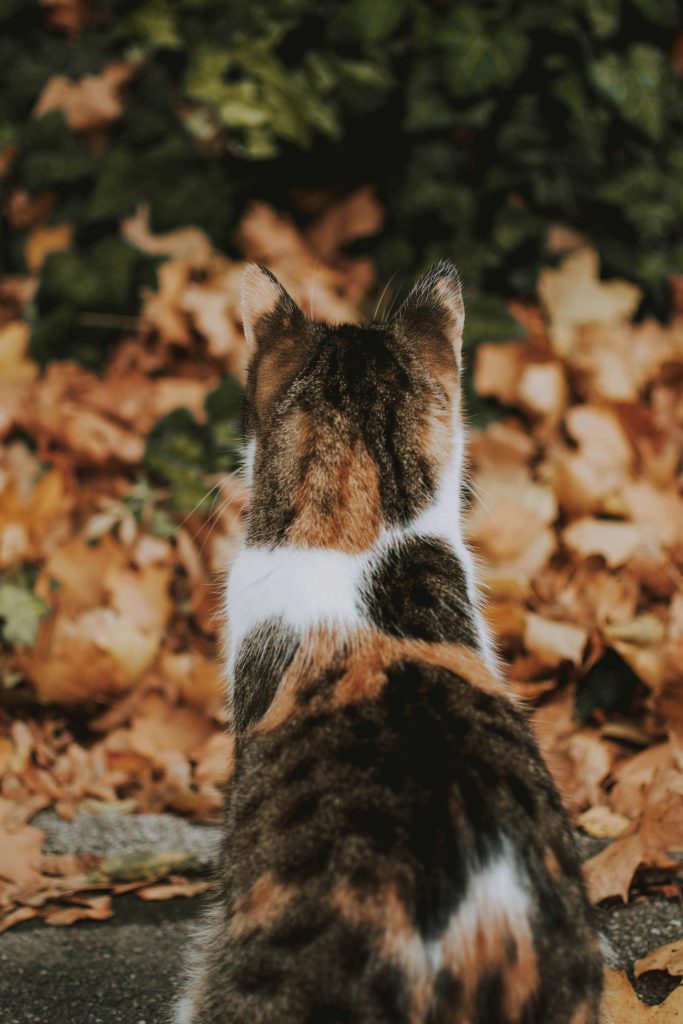You might have heard that “all calico cats are female”, but do you know why? The short answer is “genetics”, but if you want more details, buckle up!
Some of the most common cat coat colors like black or tortoiseshell aren’t just random; they follow rules rooted in genetics and sex. Behind the patterns and colors of a cat’s fur lies a fascinating story about chromosome inheritance.
Follow me for a peek into the fascinating world of sexual chromosomes and genetic expression!

Basics of genetics
Let’s start with the foundation: a quick tour of genetics 101.
A gene is a part of the genome, a unit that encodes a protein. Its locus is the particular location of that gene on the physical chromosome. An allele is one version of that gene, there are usually more than one per gene. These alleles can be responsible for changes, big or small, in the protein encoded by the gene.
To impact the cell and its environment, a gene has to be expressed for the corresponding protein to be produced. Cells in multicellular organisms like animals are specialized and do not express all genes in their genome. The cocktail of proteins they produce leads to them presenting different characteristics, which translates into a phenotype, or the sum of observable characteristics of an individual organism.
Before we get into fur colors, we need to talk about chromosomes, and one pair in particular. Cats have 19 pairs of chromosomes, 18 of which are called autosomes and do not differ between males and females. What interests us right now though is the last chromosome pair, the sexual chromosomes: XX for the females, and XY for the males (generally, there are a few exceptions; we will discuss some of them here).
The X chromosome carries significantly more genes than the Y chromosome: around 1000 genes for the X chromosome, compared to around 20-50 genes (estimated) on the Y chromosome. This huge difference would lead to an imbalance in genes expressed between female and male cats. To equalize this, an irreversible process called Lyonization (or X-inactivation) happens in each cell of a female (XX) embryo early on during embryonic development: one of the X chromosomes is randomly deactivated.
Neighboring cells might not inactivate the same X chromosome. These cells later divide themselves during development, thereby doubling each time the size of the cell cluster that inactivated that one specific X chromosome.
This mosaic of different active X chromosomes leads to patches of color on the fur, as you can see here:
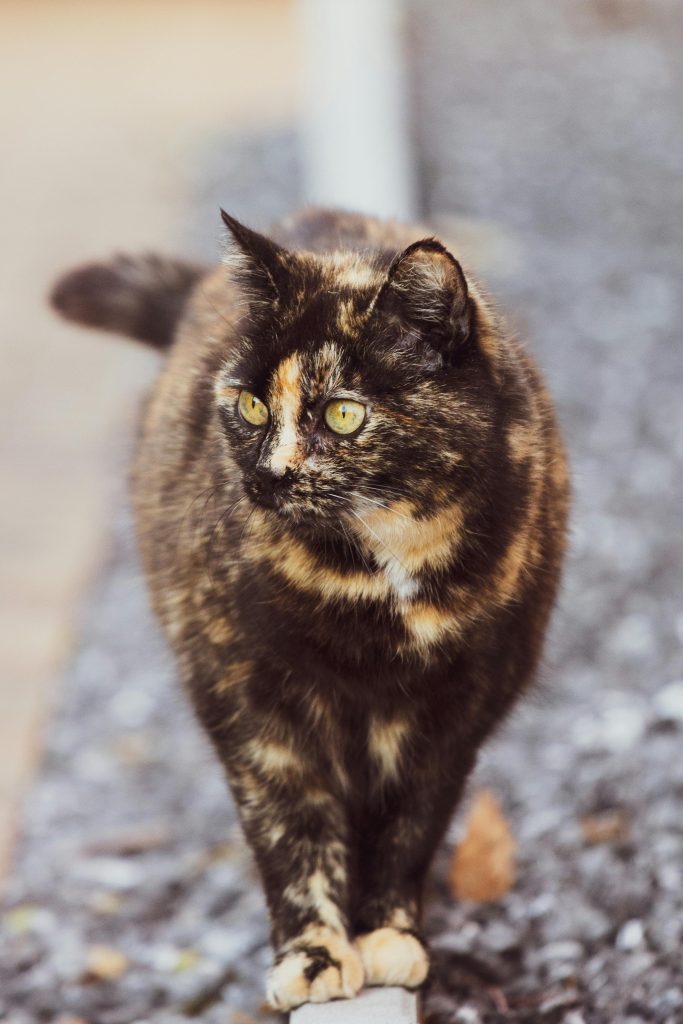
Fun fact: Tortoiseshell cats tend to have smaller, less defined patches than calicos.
Not all species that reproduce through sex and, therefore, have sexual chromosomes solve the problem of the gene number imbalance between the X and Y chromosomes in the same way. Mammals, including cats and humans, use X-inactivation, whereas fruit flies (Drosophila) use hyper transcription. Some worms, like C. elegans, a worm commonly used in laboratories, use hypo transcription of either sexual chromosome.
Black cats are mostly males
Every cat’s fur color is built from just two pigments, black and orange, or the complete absence of pigment, which shows up as white.
Pigment production in cats isn’t random, it’s the job of specialized cells that decide what colors show up where. Melanocytes are the cells in the skin and hair that determine their color. For this, they have access to two different pigments: eumelanin (black) and phaeomelanin, which is red-orange. A cat with melanocytes only expressing eumelanin might be black or gray, depending on the quantity of pigments.
One gene is primarily responsible for eumelanin, it is called locus B. On this gene, the allele B is dominant and leads to a black phenotype, i.e, a black cat. The alleles b and b1 (or b’) are both recessive and lead to a chocolate and cinnamon phenotype, respectively.
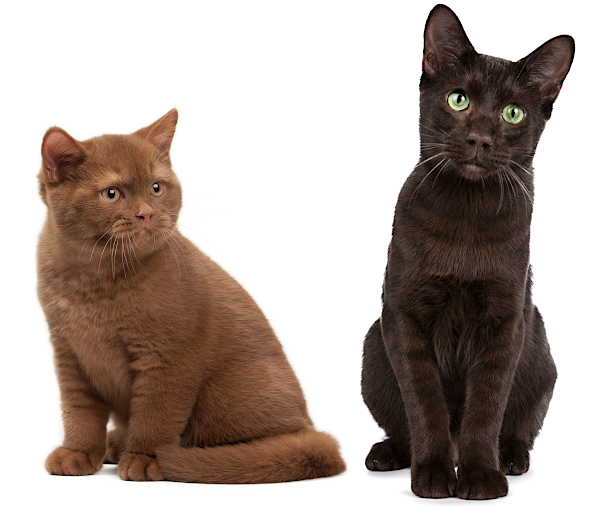
Two genes, locus A and locus O, are responsible for the production of phaeomelanin. Locus A’s allele is recessive, but mostly blocked if the dominant allele O is also present. Locus O is situated on the X chromosome, it is X-linked. The dominant allele O leads to a cat with fur in the orange tones, while the recessive allele o leads to a black or brown cat.
Therefore, for a cat to be black, it needs a combination of three alleles on all its corresponding chromosomes: B on locus B, a on locus A, and o on locus O. Since locus O is X-linked, male cats (with XY chromosomes) only need one allele o, whereas female cats (with XX chromosomes) need two identical versions of allele o which is statistically less probable. So next time you spot a black cat, there is a 75% chance you are looking at a male.
Mini-Game! “Pick the female in these pictures!” (Answer at the bottom of the article)
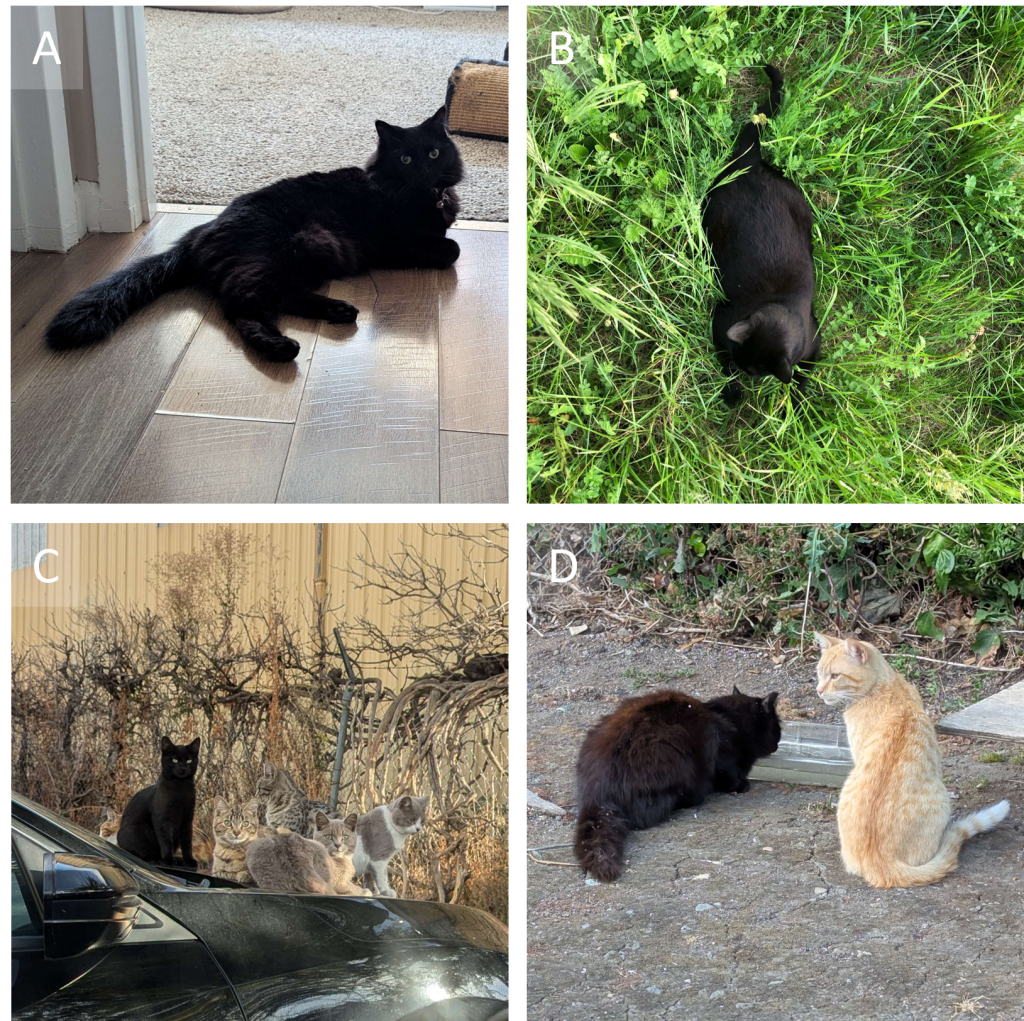
What about tortoiseshell and calico cats?
Tortoiseshell cats are bicolor cats with a mixture of red (phaeomelanin) and black-based (eumelanin) colors, without white. Calico cats are tortoiseshell cats that also have white in their fur (they are sometimes called “tortoiseshell and white”); they are tri-color cats.
Now we need to remember the patches of color on the fur, visual reminders of the random X-inactivation process. Both locus O, responsible for the orange phenotype, and locus B, responsible for the black phenotype, are located on the X chromosome. Some patches might express the black phenotype, and some others the orange phenotype, leading to a tortoiseshell cat.
Male cats do not undergo the Lyonization process during development due to their only one X chromosome. This is also the reason why they can only have either the black or orange phenotype, but not both at the same time (usually).

Male calicos
Male calico cats are very rare, and three genetic causes have been identified so far.
- If a cat receives two X chromosomes and one Y chromosome from its parents, it is XXY. Its phenotype is male, although such cats are generally sterile. Due to the presence of the two X chromosomes, an XXY cat can be calico, by the same mechanism as a female (XX) cat.
- The XXY condition can sometimes arise after conception, in which case not all cells of the cat have the same number of chromosomes. This is called a “mosaic individual” and can translate to different fur colors on the same cat.
- Rarely, two embryos fuse while in early development. The resultant cat is a “chimera” and can present red- and black-based fur colors if the embryos had different color genotypes.
Did you know? “Lyonization” is named after Mary F. Lyon, who uncovered the mystery of X-chromosome inactivation in 1961.
As said before, calico cats are tricolor. So, where does the white come from? Another gene, named KIT, is primarily responsible for this. It disrupts the production and migration of melanocytes to the hair.
Multiple alleles of this gene have been characterized, including two dominant ones: Dominant white, which leads to a completely white fur, and White spotting, which leads to white patches on an otherwise colored cat. Several recessive alleles for this gene are also known, like w (or N, no white at all), wg (or Birman white gloving allele, white “gloves” at the paws), and wsal (or salmiak: a tuxedo cat, but each black hair in the fur fades to white, from root to tip).
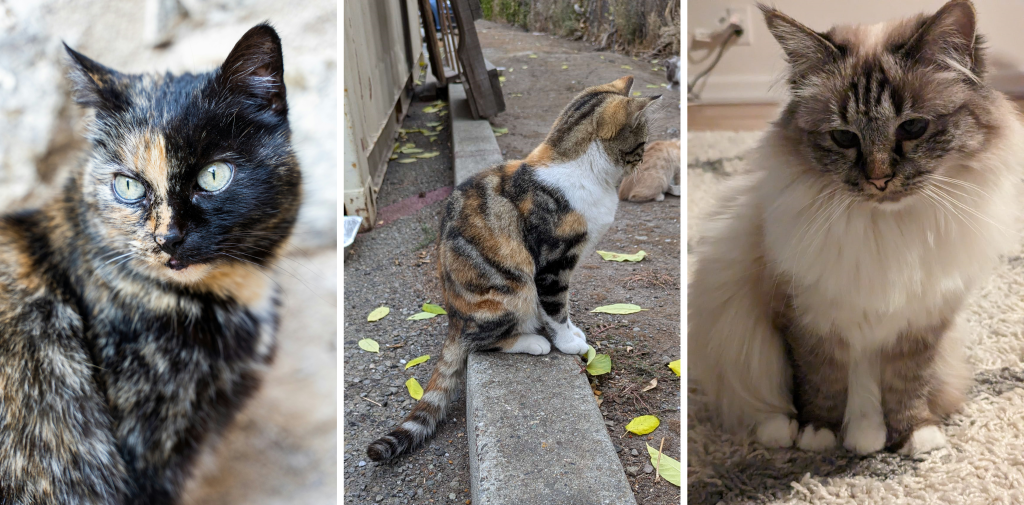
Middle: a calico cat (Credit: Crazy Lab Lady)
Right: a Birman cat, with the characteristic white paws (Credit: Crazy Lab Lady)
In conclusion, both male black cats and female calicos are the norm because the genes responsible for the orange and black phenotypes are located on the X chromosome.
I hope you learned something interesting about the genetics of our furry friends and internet stars.
Don’t hesitate to tell us what you thought of this first blog article. What would you like us to talk about next time?
Mini-game answer (click me!)
The female is in B!
Sources
- Let’s Talk Science: The Science Behind the Calico Cat’s Colours
- Wikipedia: Cat coat genetics
- Laboratory of Veterinary Genetics: Cat Genetics 2.0: Colours
- Wikipedia: Sex-chromosome dosage compensation
- Genome.gov: Lyonization
Rabbithole Starter
- Wikipedia: Cat coat genetics
- Laboratory of Veterinary Genetics: Cat Genetics 2.0: Colours
- Book by Gould, Laura: Cats Are Not Peas: A Calico History of Genetics (2007, 2nd ed.), Wellesley, Massachusetts: A. K. Peters, Ltd. Link

